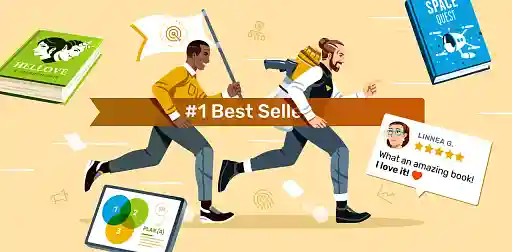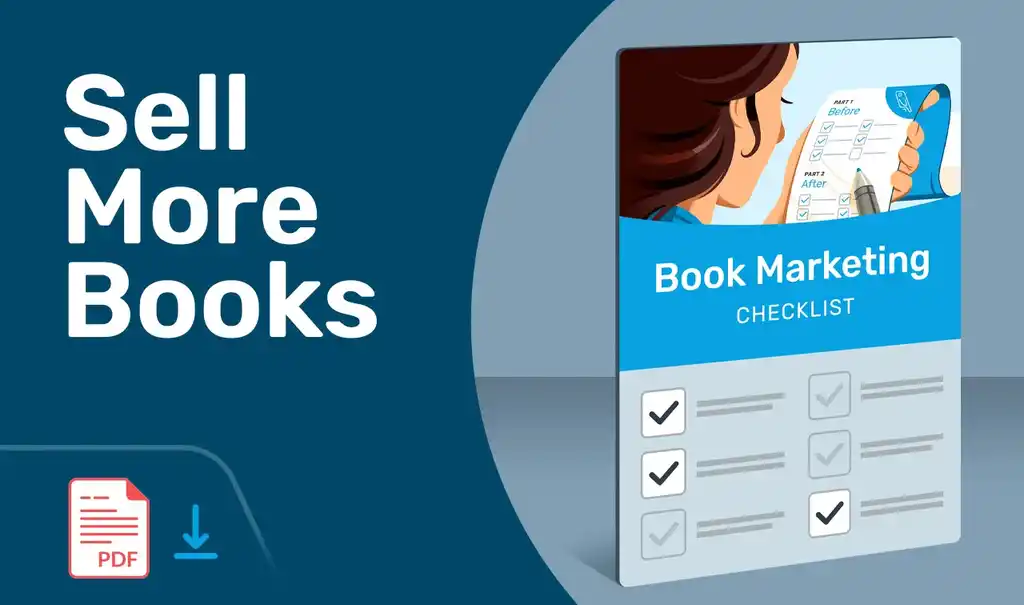Posted on Nov 06, 2015
Getting "Traction" for Your Books — Interviewing Justin Mares
About the author
Reedsy's editorial team is a diverse group of industry experts devoted to helping authors write and publish beautiful books.
More about the Reedsy Editorial Team →“Most startups don't fail at building a product. Most startups fail at getting traction.” — Traction Book
The same can be said of books. Most authors don’t fail at writing a book, they fail at finding their readers and selling the book to them. This is why we’ve always stressed how authors and startups are similar, and how, when it comes to marketing, authors can learn a lot from startups.
So today, we decided to bring some of the best startup marketing advice to the Reedsy blog: Justin Mares is the co-author of the Traction book, a bestseller and true reference work for early-stage startups planning their marketing strategy. As usual, the transcript of the most important points of the interview is provided below!
Hi Justin, it’s really amazing to have you on our Reedsy podcast. You’re the co-author of the Traction Book, which I think is one of the very best marketing books for startups. For our listeners who don’t know about it yet, could you quickly give us the pitch?
Sure! So Traction is a book that is there to help startups with the hard part of “what do you do once you have a product?” The book approaches how to go about setting up a growth process, how to figure out what channels are good for your business, and then has a chapter on each one of the 19 “channels” that we have identified as ways for a business to acquire customers.
And you’re now releasing the second edition. What’s interesting is that you self-published the first one, and then got picked up by Penguin, how’s the experience been?
Interesting… Yes, it’s been interesting. Like anything, there are positives and negatives. On the positive side, the second edition is in bookstores, it has been professionally edited, it is a lot crisper, we did a bunch more iterations and stuff like that, so it’s a really good book.
On the negative side, things move a lot more slowly, and you lose some of the creative control that you have when you’re self-publishing a book.
So on balance, I think it was the right decision, we’re really happy with Portfolio (Penguin), it’s been a great experience working with them, but there certainly are some positives and negatives.
That’s really interesting, and I can definitely understand why, coming from a startup and tech background, you would find traditional publishing slow. Now, on another note, I like to think that authors are a little bit like startups, and that they should approach marketing in the same way we do. Would you agree with that?
Definitely. And that’s something we mention in our book: if you approach things in a systematic way —that we talk about in our book— you are far more likely to have things work out. And we found that applying that process we describe in the book to our own marketing of the book had the same impact and allowed us to do really well.
And that’s why I usually recommend authors to read the Traction book and use the approach you describe. Now, just quickly for our readers, could you sum up that approach?
Sure! So what we talk about is basically: look at the potential channels (ways) you could market the book, and then figure out, if you want to sell, say, 5000 copies, which of these channels is going to allow you to sell that number of copies. [Read more about the “bullseye” approach here]
So in our case we looked and we said: “ok, we think email marketing is going to work well, we think doing blog guest posts is going to work well, and we think podcasts will work well”. Once we figure that out, we ran small tests on each of these three channels. We measured them and saw that podcasts and email marketing far outperformed guest posting.
So then we thought: great, let’s get on every potential podcast we can, get on every potential newsletter that has a relevant email list, and let’s just focus on those instead of doing all three of them in the hope that one will work (which is what a lot of people sadly do when it comes to marketing).
This makes sense. And it’s interesting because, as you say, a lot of authors try to do everything at one time (social media, newsletter, advertising, blog tours, etc.) and when you do that, you lose focus and waste time and resources.
Exactly. I mean, there are so many things you can do as an author, as a marketer or as a business person to market your stuff. The possibilities are effectively limitless, so what you have to do is figure out what the best use of your time is, and spend as much time doing that as possible. That’s what our approach effectively tries to help people with: if you’re trying to sell your book, or grow your company, focus only on the things that really matter, and ignore everything else.
That makes sense. The one thing that makes it a bit trickier for authors, is that often they sell their books through platforms like Amazon, iBooks or Kobo, which they don’t control. So how do you do the tracking in a case like this, how can you know which “channels” are bringing you which sales?
Great question. This is something that is certainly a challenge, it’s not easy. But we found a couple of things you can do. For one, we could look at our rough sales rank and see, if we launch a certain campaign today, see what our sales rank does.
The other thing you can do is set up Amazon affiliate links so that if someone promotes your book, you can give them a unique affiliate link that allows you then to see how many people clicked on the link and how many made a purchase as a result of it.
That way we were able to track the number of people who bought through email promotions, through guest posts, through podcasts, etc.
Yes, we’d heard the affiliate link tactic before (from Mark Dawson), so I’m glad you mentioned it. Now, you had this non-fiction book that you marketed very well. If you had to put yourself in the shoes of a fiction author, which channels would you test first?
Hmm, it’s a hard one. I think basic marketing principles can apply here, and you’ve got to ask yourself the right questions.
First, who are the people who are most likely to enjoy or resonate with your book, and where are they hanging out? Then, how are these people finding out about new fiction books today? What are the bestselling indie authors in your genre and how did they do their early-stage marketing?
I would look at all these things and see what you can replicate and what you can’t.
I think that one thing that is really powerful in driving book discoverability today is still word-of-mouth. Would you agree with that?
Oh definitely, I’ve got 150 books on my reading list that have been recommended to me…
So as an author, what can you do to help encourage or kickstart word-of-mouth?
The biggest one is to write literally the best book that you could ever think of writing. One reason why I think Traction has done really well is that if you are someone who is working on a startup, I can legitimately recommend that book to you —even if I wasn’t one of the authors.
I had coffee with someone four hours ago and he told me “oh yeah, my friend is running growth at this one company and he said that Traction was a really good book, so he gave it to me and now I’m meeting with you”. And that only happens when you write a really good book that becomes one of the reference works in its category.
I think that’s the #1 thing you can do for word-of-mouth. Otherwise, things that we’ve done is we’ve inserted little bonuses where after reading the book, you can go get bonus material on the website and once you’re signed up to our mailing list we have referral systems like “forward this to a friend and we’ll give you another bonus”.
Thanks for the insights, Justin! And again, I really recommend the Traction book to both startup people and authors because it offers a good approach and a good breakdown of all the channels you can use to sell your books.
Follow Justin Mares and Reedsy on Twitter: @jwmares and @ReedsyHQ
What channels have worked for you in your book marketing activities? How do you track your efforts and measure your results? Leave us your thoughts, or any questions for Justin, in the comments below!









3 responses
Michael Doane says:
08/11/2015 – 16:03
This is so great! I'm always telling the authors I work with that being an author is a bit like a startup and that every book you write is like a product your startup is selling. I read Traction after it was recommended by Product Hunt (I believe) and I can't agree with Ricardo more. If you're an author, a startup, or just someone trying to make an impact, get Justin's book.
↪️ Ricardo Fayet replied:
08/11/2015 – 18:29
Thanks, Michael! Traction is great because it's really simple and makes instant sense, but goes against all your natural marketing instincts of trying to be everywhere and do everything at once. Plus I think authors need to hear and understand that, if they're not on Twitter or Facebook, if they don't have a blog, if they don't get access to book reviewers, that's ok. There are thousands of potential channels and though you should try them all you certainly shouldn't keep spending your time on something you hate and that doesn't bring you any sales (both are often surprisingly linked!)
Randy Milanovic says:
18/10/2016 – 18:54
my biggest learning... new codes for new versions...